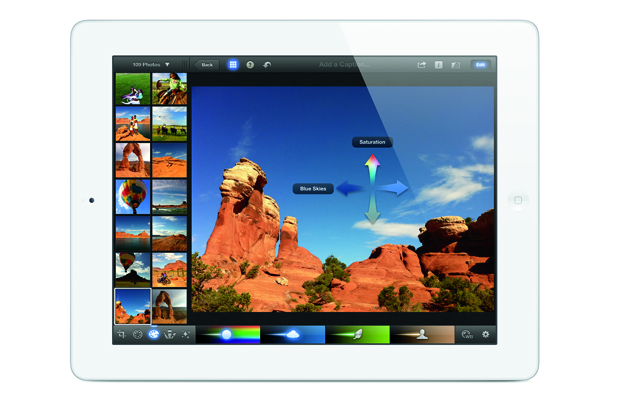The new iPad

Today, at the Yerba Buena Center for the Arts in San Francisco, Tim Cook unveiled Apple's new tablet computer, which it calls, simply, "the new iPad."
Corporate bluster aside -- the adjectives "epic," "incredible," "mind-blowing" and even "luscious" were used during the event, evoking not a new gadget but a display of French pastries fit for Marie Antoinette -- the new device continues Apple's efforts to stay ahead of the pack by offering a better experience than its rivals can muster.
Rare is it that Apple rushes to market, and that ethos was on display today: the iPad finally receives a higher-quality, five-megapixel camera that can manage 1080p video; faster 4G LTE mobile broadband; a faster, dual-core processor code-named A5X; voice-based dictation; and most notably, a high-resolution display (at 2048 by 1536 pixels) that leapfrogs what's on the market today.
For all but the display, which demonstrates how formidable Apple is in throwing around its weight within the industry's supply chain, these features debuted elsewhere: Samsung's Galaxy Tab offers 4G connectivity; Asus' Transformer Pad 300 has a quad-core chip; both offer more camera megapixels. Yet Apple retains the market lead, by an astounding margin.
We love to give Apple credit for sparking revolutions in technology, and the company wholly embraces that reputation. But the reality is that Apple is merely advancing its products. The only reason to build a new product is if it performs better than what's on the market, Steve Jobs once said. The company's new iPad continues that tradition.
Note the use of the phrase, "performs better." The gadget blogs covering the announcement have already seized and fed merrily on the wave of new statistics that come with a new device. And while some of those figures have certainly improved, that's not where Apple's focus lies. It is on the sum of those parts.
Since it was first launched, Apple has had to fight criticism that the iPad wasn't enough of a computer to be useful. Immediately belittled as a too-large iPod, the iPad fought to convey a sense of wonder ("magical," Jobs boldly described it) at a new type of mass-market device. As curious consumers began to adopt the product, its user base grew large enough to impact the sales of traditional laptop computers. A truth soon emerged, much to the chagrin of HP, Dell and Samsung: most people don't need a fully functional computer with a keyboard. A portable device with e-mail, World Wide Web access and "apps" was enough; for millions of people, a tablet computer is fully functional.
Still, the iPad remained a device that excelled at consumption and interaction, not creation. Today's new model attempts to bridge that gap for the average user, through the availability of the inexpensive iPhoto photo-editing suite and improvements to Apple's iWork office productivity suite. The new iPad will hardly threaten the massive desktop rigs employed by photographers and designers using Adobe Photoshop or Illustrator, nor the dual-monitor setups of data denizens who spend their days toiling away in Microsoft Excel. But it will better satisfy the needs of the average consumer or employee who increasingly seeks the core functionality of professional applications -- better photos, easier presentations -- without the complicated, specialized extras that drive the price into enterprise territory.
Much like his rumored personality, Cook's performance today was understated. Some called it "boring." That's because he announced a product that claimed only one thing: that it was "new." Which for Apple, means "better."
